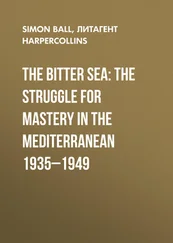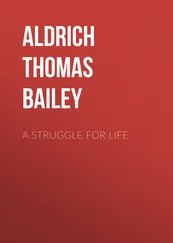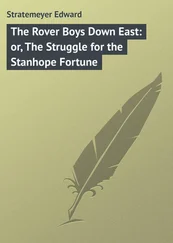Чарльз Дарвин - The Origin of Species by Means of Natural Selection Or, the Preservation of Favoured Races in the Struggle for Life
Здесь есть возможность читать онлайн «Чарльз Дарвин - The Origin of Species by Means of Natural Selection Or, the Preservation of Favoured Races in the Struggle for Life» весь текст электронной книги совершенно бесплатно (целиком полную версию без сокращений). В некоторых случаях можно слушать аудио, скачать через торрент в формате fb2 и присутствует краткое содержание. Год выпуска: 1999, Жанр: Биология, на английском языке. Описание произведения, (предисловие) а так же отзывы посетителей доступны на портале библиотеки ЛибКат.
- Название:The Origin of Species by Means of Natural Selection Or, the Preservation of Favoured Races in the Struggle for Life
- Автор:
- Жанр:
- Год:1999
- ISBN:нет данных
- Рейтинг книги:3 / 5. Голосов: 1
-
Избранное:Добавить в избранное
- Отзывы:
-
Ваша оценка:
- 60
- 1
- 2
- 3
- 4
- 5
The Origin of Species by Means of Natural Selection Or, the Preservation of Favoured Races in the Struggle for Life: краткое содержание, описание и аннотация
Предлагаем к чтению аннотацию, описание, краткое содержание или предисловие (зависит от того, что написал сам автор книги «The Origin of Species by Means of Natural Selection Or, the Preservation of Favoured Races in the Struggle for Life»). Если вы не нашли необходимую информацию о книге — напишите в комментариях, мы постараемся отыскать её.
The Origin of Species by Means of Natural Selection Or, the Preservation of Favoured Races in the Struggle for Life — читать онлайн бесплатно полную книгу (весь текст) целиком
Ниже представлен текст книги, разбитый по страницам. Система сохранения места последней прочитанной страницы, позволяет с удобством читать онлайн бесплатно книгу «The Origin of Species by Means of Natural Selection Or, the Preservation of Favoured Races in the Struggle for Life», без необходимости каждый раз заново искать на чём Вы остановились. Поставьте закладку, и сможете в любой момент перейти на страницу, на которой закончили чтение.
Интервал:
Закладка:
With respect to the development of the corolla, Sprengel's idea that the ray-florets serve to attract insects, whose agency is highly advantageous, or necessary for the fertilisation of these plants, is highly probable; and if so, natural selection may have come into play. But with respect to the seeds, it seems impossible that their differences in shape, which are not always correlated with any difference in the corolla, can be in any way beneficial; yet in the Umbelliferae these differences are of such apparent importance—the seeds being sometimes orthospermous in the exterior flowers and coelospermous in the central flowers—that the elder De Candolle founded his main divisions in the order on such characters. Hence modifications of structure, viewed by systematists as of high value, may be wholly due to the laws of variation and correlation, without being, as far as we can judge, of the slightest service to the species.
We may often falsely attribute to correlated variation structures which are common to whole groups of species, and which in truth are simply due to inheritance; for an ancient progenitor may have acquired through natural selection some one modification in structure, and, after thousands of generations, some other and independent modification; and these two modifications, having been transmitted to a whole group of descendants with diverse habits, would naturally be thought to be in some necessary manner correlated. Some other correlations are apparently due to the manner in which natural selection can alone act. For instance, Alph. De Candolle has remarked that winged seeds are never found in fruits which do not open; I should explain this rule by the impossibility of seeds gradually becoming winged through natural selection, unless the capsules were open; for in this case alone could the seeds, which were a little better adapted to be wafted by the wind, gain an advantage over others less well fitted for wide dispersal.
COMPENSATION AND ECONOMY OF GROWTH.
The elder Geoffroy and Goethe propounded, at about the same time, their law of compensation or balancement of growth; or, as Goethe expressed it, "in order to spend on one side, nature is forced to economise on the other side." I think this holds true to a certain extent with our domestic productions: if nourishment flows to one part or organ in excess, it rarely flows, at least in excess, to another part; thus it is difficult to get a cow to give much milk and to fatten readily. The same varieties of the cabbage do not yield abundant and nutritious foliage and a copious supply of oil-bearing seeds. When the seeds in our fruits become atrophied, the fruit itself gains largely in size and quality. In our poultry, a large tuft of feathers on the head is generally accompanied by a diminished comb, and a large beard by diminished wattles. With species in a state of nature it can hardly be maintained that the law is of universal application; but many good observers, more especially botanists, believe in its truth. I will not, however, here give any instances, for I see hardly any way of distinguishing between the effects, on the one hand, of a part being largely developed through natural selection and another and adjoining part being reduced by the same process or by disuse, and, on the other hand, the actual withdrawal of nutriment from one part owing to the excess of growth in another and adjoining part.
I suspect, also, that some of the cases of compensation which have been advanced, and likewise some other facts, may be merged under a more general principle, namely, that natural selection is continually trying to economise in every part of the organisation. If under changed conditions of life a structure, before useful, becomes less useful, its diminution will be favoured, for it will profit the individual not to have its nutriment wasted in building up a useless structure. I can thus only understand a fact with which I was much struck when examining cirripedes, and of which many other instances could be given: namely, that when a cirripede is parasitic within another cirripede and is thus protected, it loses more or less completely its own shell or carapace. This is the case with the male Ibla, and in a truly extraordinary manner with the Proteolepas: for the carapace in all other cirripedes consists of the three highly important anterior segments of the head enormously developed, and furnished with great nerves and muscles; but in the parasitic and protected Proteolepas, the whole anterior part of the head is reduced to the merest rudiment attached to the bases of the prehensile antennae. Now the saving of a large and complex structure, when rendered superfluous, would be a decided advantage to each successive individual of the species; for in the struggle for life to which every animal is exposed, each would have a better chance of supporting itself, by less nutriment being wasted.
Thus, as I believe, natural selection will tend in the long run to reduce any part of the organisation, as soon as it becomes, through changed habits, superfluous, without by any means causing some other part to be largely developed in a corresponding degree. And conversely, that natural selection may perfectly well succeed in largely developing an organ without requiring as a necessary compensation the reduction of some adjoining part.
MULTIPLE, RUDIMENTARY, AND LOWLY-ORGANISED STRUCTURES ARE VARIABLE.
It seems to be a rule, as remarked by Is. Geoffroy St. Hilaire, both with varieties and species, that when any part or organ is repeated many times in the same individual (as the vertebrae in snakes, and the stamens in polyandrous flowers) the number is variable; whereas the number of the same part or organ, when it occurs in lesser numbers, is constant. The same author as well as some botanists, have further remarked that multiple parts are extremely liable to vary in structure. As "vegetative repetition," to use Professor Owen's expression, is a sign of low organisation; the foregoing statements accord with the common opinion of naturalists, that beings which stand low in the scale of nature are more variable than those which are higher. I presume that lowness here means that the several parts of the organisation have been but little specialised for particular functions; and as long as the same part has to perform diversified work, we can perhaps see why it should remain variable, that is, why natural selection should not have preserved or rejected each little deviation of form so carefully as when the part has to serve for some one special purpose. In the same way that a knife which has to cut all sorts of things may be of almost any shape; whilst a tool for some particular purpose must be of some particular shape. Natural selection, it should never be forgotten, can act solely through and for the advantage of each being.
Rudimentary parts, as is generally admitted, are apt to be highly variable. We shall have to recur to this subject; and I will here only add that their variability seems to result from their uselessness, and consequently from natural selection having had no power to check deviations in their structure.
A PART DEVELOPED IN ANY SPECIES IN AN EXTRAORDINARY DEGREE OR MANNER, IN COMPARISON WITH THE SAME PART IN ALLIED SPECIES, TENDS TO BE HIGHLY VARIABLE.
Several years ago I was much struck by a remark to the above effect made by Mr. Waterhouse. Professor Owen, also, seems to have come to a nearly similar conclusion. It is hopeless to attempt to convince any one of the truth of the above proposition without giving the long array of facts which I have collected, and which cannot possibly be here introduced. I can only state my conviction that it is a rule of high generality. I am aware of several causes of error, but I hope that I have made due allowances for them. It should be understood that the rule by no means applies to any part, however unusually developed, unless it be unusually developed in one species or in a few species in comparison with the same part in many closely allied species. Thus, the wing of the bat is a most abnormal structure in the class of mammals; but the rule would not apply here, because the whole group of bats possesses wings; it would apply only if some one species had wings developed in a remarkable manner in comparison with the other species of the same genus. The rule applies very strongly in the case of secondary sexual characters, when displayed in any unusual manner. The term, secondary sexual characters, used by Hunter, relates to characters which are attached to one sex, but are not directly connected with the act of reproduction. The rule applies to males and females; but more rarely to females, as they seldom offer remarkable secondary sexual characters. The rule being so plainly applicable in the case of secondary sexual characters, may be due to the great variability of these characters, whether or not displayed in any unusual manner—of which fact I think there can be little doubt. But that our rule is not confined to secondary sexual characters is clearly shown in the case of hermaphrodite cirripedes; I particularly attended to Mr. Waterhouse's remark, whilst investigating this order, and I am fully convinced that the rule almost always holds good. I shall, in a future work, give a list of all the more remarkable cases. I will here give only one, as it illustrates the rule in its largest application. The opercular valves of sessile cirripedes (rock barnacles) are, in every sense of the word, very important structures, and they differ extremely little even in distinct genera; but in the several species of one genus, Pyrgoma, these valves present a marvellous amount of diversification; the homologous valves in the different species being sometimes wholly unlike in shape; and the amount of variation in the individuals of the same species is so great that it is no exaggeration to state that the varieties of the same species differ more from each other in the characters derived from these important organs, than do the species belonging to other distinct genera.
Читать дальшеИнтервал:
Закладка:
Похожие книги на «The Origin of Species by Means of Natural Selection Or, the Preservation of Favoured Races in the Struggle for Life»
Представляем Вашему вниманию похожие книги на «The Origin of Species by Means of Natural Selection Or, the Preservation of Favoured Races in the Struggle for Life» списком для выбора. Мы отобрали схожую по названию и смыслу литературу в надежде предоставить читателям больше вариантов отыскать новые, интересные, ещё непрочитанные произведения.
Обсуждение, отзывы о книге «The Origin of Species by Means of Natural Selection Or, the Preservation of Favoured Races in the Struggle for Life» и просто собственные мнения читателей. Оставьте ваши комментарии, напишите, что Вы думаете о произведении, его смысле или главных героях. Укажите что конкретно понравилось, а что нет, и почему Вы так считаете.












